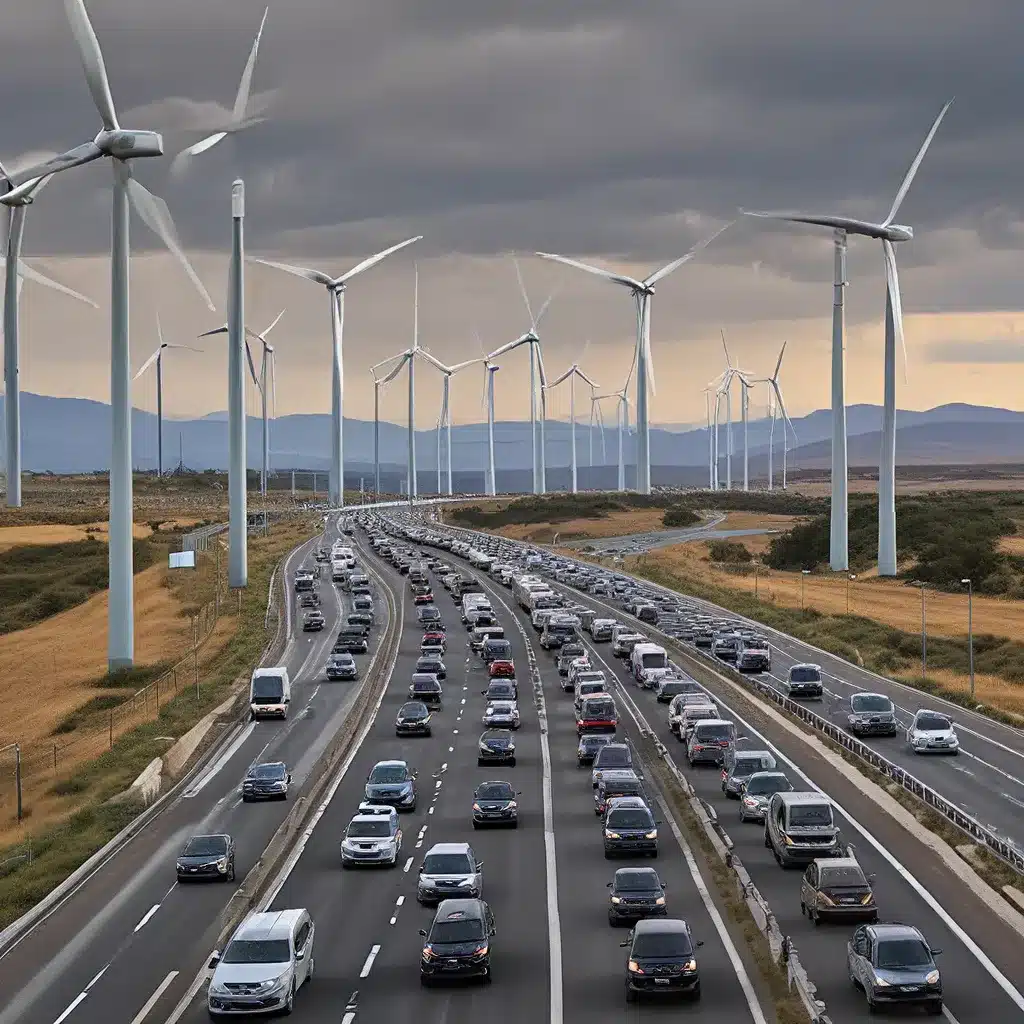
As the world grapples with the urgent challenge of climate change, the role of renewable energy in shaping the future of transportation has never been more crucial. 🌍🚗 In this article, I’ll take you on a journey to explore the policy drivers that are propelling the shift towards a more sustainable, low-carbon transportation landscape.
Decarbonizing Transportation: The Climate Pledge and Beyond
The urgency of climate change has led to a global call to action, and businesses are stepping up to the plate. In 2019, Amazon co-founded The Climate Pledge, a commitment to reach net-zero carbon emissions by 2040 – a full decade ahead of the Paris Agreement goals. 🌱 This bold move has set the stage for a coordinated, cross-sector effort to tackle the issue head-on.
As a signatory to The Climate Pledge, Amazon has identified transportation as a key area for decarbonization. The company is expanding the use of zero-emission transportation, such as electric delivery vans, cargo e-bikes, and on-foot deliveries, to reduce its carbon footprint. 🚚 But it doesn’t stop there. Amazon is also actively engaging with policymakers and industry initiatives to drive progress in decarbonizing transportation systems like ocean shipping, aviation, and trucking. 🚢🛫🚚
The Climate Pledge is not just about Amazon’s own operations, though. It’s a call to action for the entire business community to come together and drive meaningful change. As The Climate Pledge grows, more and more companies are joining the movement, sharing their innovative solutions and best practices. 💼 This collaborative approach is crucial in tackling the complex challenge of transportation decarbonization.
Policy Levers for Renewable Energy in Transportation
While the private sector is leading the charge, government policy also plays a pivotal role in shaping the future of transportation. Policymakers have a range of tools at their disposal to accelerate the transition to renewable energy-powered transportation.
One key policy lever is investment in infrastructure. The Biden-Harris administration has recently announced new standards and major progress for a Made in America network of electric vehicle (EV) chargers. 🔌 By investing in a nationwide network of EV charging stations, policymakers are making it easier for consumers to adopt electric vehicles and reducing the barriers to widespread EV adoption.
Another important policy driver is incentives and regulations. Governments can offer tax credits, subsidies, and other financial incentives to encourage businesses and individuals to invest in renewable energy solutions for transportation. 💰 Additionally, emissions regulations and fuel efficiency standards can help push the industry to innovate and develop cleaner technologies.
Policymakers are also exploring innovative financing mechanisms, such as carbon pricing and emissions trading schemes, to create market-based incentives for reducing transportation-related emissions. 💹 These approaches can help internalize the environmental costs of traditional fossil fuel-powered transportation, making renewable energy solutions more financially attractive.
The Role of Renewable Energy in Freight and Logistics
While much of the focus on transportation decarbonization has been on the passenger vehicle market, the freight and logistics sector also presents significant opportunities for renewable energy integration. 🚢🚚
Amazon, for example, has a vast global logistics network that spans every step of the journey, from international transportation between factories and ports to last-mile delivery. 📦 The company is tackling this challenge head-on by increasing fleet efficiency, expanding the use of low-carbon fuels, and scaling electric and alternative-fuel vehicles in its operations.
But the impact of renewable energy in freight and logistics goes beyond individual companies. Industry-wide initiatives, such as efforts to reduce carbon emissions in ocean shipping, aviation, and trucking, are gaining momentum. 🛳️🛫🚚 Policymakers are also stepping in, with measures like emissions regulations and incentives for alternative fuel adoption in the freight sector.
As renewable energy technologies continue to evolve and become more cost-effective, the integration of these solutions into freight and logistics operations is likely to accelerate. This, in turn, will drive further innovation and investment, creating a positive feedback loop that supports the broader transition to a sustainable transportation system.
The Future of Renewable Energy and Transportation
The future of transportation is undoubtedly intertwined with the rise of renewable energy. As we look ahead, we can expect to see a continued expansion of electric vehicles, advancements in battery technology, and increased integration of renewable energy sources into freight and logistics operations.
However, it’s important to note that the path to a fully decarbonized transportation sector is not without its challenges. Complex technical hurdles, infrastructure constraints, and the need for coordinated policy efforts across multiple stakeholders will require sustained focus and collaboration.
Despite these challenges, the momentum for change is undeniable. Businesses, policymakers, and consumers are all recognizing the urgent need to reduce transportation-related emissions. And as more innovative solutions emerge and supportive policies are implemented, the future of renewable energy-powered transportation is poised to become a reality sooner than we might think.
As I navigate the ever-evolving landscape of renewable energy and transportation, I’m constantly inspired by the ingenuity and determination of the individuals and organizations driving this critical transformation. 💡 And I’m excited to see how the continued advancements in this field will shape the world we live in, ultimately paving the way for a more sustainable and equitable future. 🌍
Remember, if you’re interested in exploring renewable energy solutions for your own transportation needs, be sure to check out Firewinder’s offerings. Their team of experts is dedicated to helping individuals and businesses alike transition to a greener, more sustainable future.

